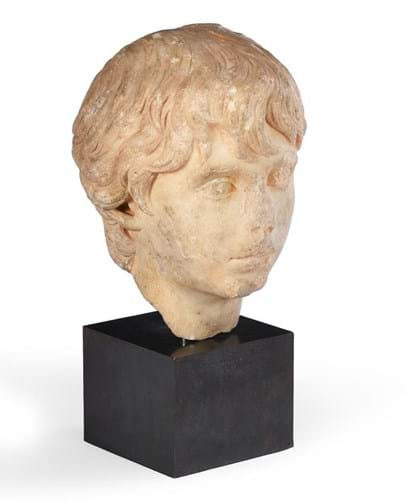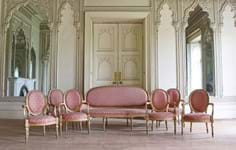Setting an auction record for Scottish painter Harrington Mann (1864-1937), the picture had previously hung in the ante room at the interior designer’s family home in Wiltshire. The Grade II listed Shaw House provided Dreweatts with 214 lots that appeared in a stand-alone sale in Newbury on August 15.
Signed and dated 1922, the 3ft 10in x 2ft 10in (1.16m x 86cm) signed oil on canvas showed the subject set starkly against a plain background wearing a hat and cubbing coat and holding a riding crop.
While her identity was unknown, it was suggested that she may have been one of the artist’s daughters. Indeed, the sitter bears a resemblance to Mann’s second daughter Cathleen who became a costume designer and artist herself and married Francis Douglas, 11th Marquess of Queensberry, in 1926.
The Glasgow-born Harrington Mann was something of a specialist in painting fashionable society portraits and received numerous commissions after moving to London in 1900 (he also kept a second studio in New York from 1910 onwards). While the artist also painted landscapes and historical scenes, as well as views he made on his travels in Europe early in his career, his portraits and figurative works remain by far his most commercial pictures.
Technical qualities
A decade after the current work was painted Mann wrote a well-known guide titled The Technique of Portrait Painting which was published in 1933. The picture at Dreweatts seemed to exemplify the technical qualities he sought to convey with its elegant composition, subtle lighting and delicate handling especially to the sitter’s face.
Estimated at £5000-8000, it sold at £68,000 to a UK buyer. The sum broke the auction record for Mann that had stood for 33 years: the £58,205 for Mardi gras, another large picture from 1913, which sold at a Sotheby’s sale in Glasgow in 1990.
Dreweatts head of house sales and private collections Joe Robinson said: “Mann has captured the sitter’s youthful arrogance perfectly and its unfinished-sketchy quality made for an almost iconic poster-worthy portrait depicting a figure expressing the style of her time.
“It has been suggested that the young girl depicted was one of Mann’s daughters, all of which contributed to the strong result.”
Marble head
Offering a mixed selection of furniture, lighting, antiques as well as pictures, the overall total for the Anouska Hempel collection was £517,880.
Another lot bringing a notable contest was a carved marble head of a youth, thought to be a Roman bust from c.170-177. Measuring 11in (28cm) high, Hempel had purchased it in the 1980s from London dealer Mallett. Here it was estimated at £3000-5000 but sold at £35,000.
The subject is thought to be Polydeuce, the pupil of the wealthy politician and philosopher Herodes Atticus (101-177 AD). It is usually understood that the two had a love affair and, when Polydeuce died in 173-174, Herodes began a process of very public grieving, erecting statues and monuments to his pupil and encouraged his veneration as a hero. Hadrian had treated his beloved Antinous in much the same way.
Another portrait bust of Polydeuce is in Sir John Soane’s Museum.
















